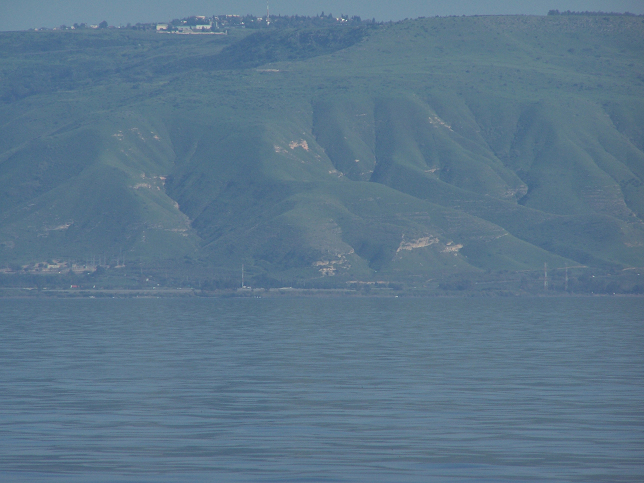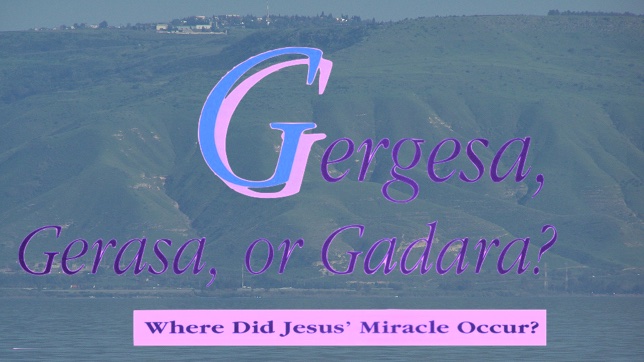How to cite this article: Ze’ev Safrai, “Gergesa, Gerasa, or Gadara? Where Did Jesus’ Miracle Occur?,” Jerusalem Perspective 51 (1996): 16-19 [https://www.jerusalemperspective.com/2771/].
| Rather listen instead? |
| JP members can click the link below for an audio version of this essay.[*]
Paid Content
Premium Members and Friends of JP must be signed in to view this content. If you are not a Premium Member or Friend, please consider registering. Prices start at $5/month if paid annually, with other options for monthly and quarterly and more: Sign Up For Premium  |
The miracle of the swine took place during Jesus’ visit to “the land of the Gadarenes,” “the land of the Gerasenes,” or “the land of the Gergesenes.” All three of these New Testament variants have solid textual support. On the basis of the textual evidence alone, we cannot determine which of these variants is the original in any of the three synoptic versions.[12] Despite this frustrating textual problem, we can determine, on the basis of geographical considerations, the location of the miracle. We are confronted by two questions. First, where did the miracle happen, or, what site did believers connect with the miracle? Second, how reliable, in this instance, is Christian tradition? Did second- and third-century Christian communities have accurate traditions about the deeds of Jesus? Before we launch into a geographical discussion, we must survey what early Christian writers had to say about the miracle of the swine.
Premium Members and Friends of JP must be signed in to view this content.
If you are not a Premium Member or Friend, please consider registering. Prices start at $5/month if paid annually, with other options for monthly and quarterly and more: Sign Up For Premium

Premium Members and Friends of JP must be signed in to view this content.
If you are not a Premium Member or Friend, please consider registering. Prices start at $5/month if paid annually, with other options for monthly and quarterly and more: Sign Up For Premium

- [1] Origen to John 6:41, chpt. 24. ↩
- [2] Eusebius, Onomasticon 74.16. ↩
- [3] Eusebius’ wording and explanation are very similar to the words of Origen, suggesting interdependency. Both authors may have used the same lost geographical lexicon. ↩
- [4] Eusebius, Onomasticon 64.1. ↩
- [5] Cyril of Scythopolis 108.14. ↩
- [6] Tosefta, Shevi’it 4:10; Jerusalem Talmud, Demai 23d. ↩
- [7] Y. Sussmann, "A Halakhic Inscription from the Beth Shean Valley," Tarbiz 43 (1974): 123 (Hebrew). ↩
- [8] Song of Songs Zuta 1.4 (p. 11). ↩
- [9] For a preliminary discussion of holy places in Jerusalem, see J. Wilkinson, "Christian Pilgrims in Jerusalem during the Byzantine Period," Palestine Exploration Quarterly 108 (1976): 75-101. ↩
- [10] An alternate Christian tradition, transmitted by Eusebius, places the miracle at Gadara. In my opinion, this identification represents a later development. ↩
- [11] A reliable history of Willibald’s travels was written by a nun named Hugeburc. See J. Wilkinson, Jerusalem Pilgrims (Jerusalem, 1977), 128. ↩
- [12] Matt. 8:28; Mark 5:1; Luke 8:26. For a discussion of the site, see C. Kopp, Die heiligen Staetten der Evangelien (Regensburg, 1959), 282-287. ↩



